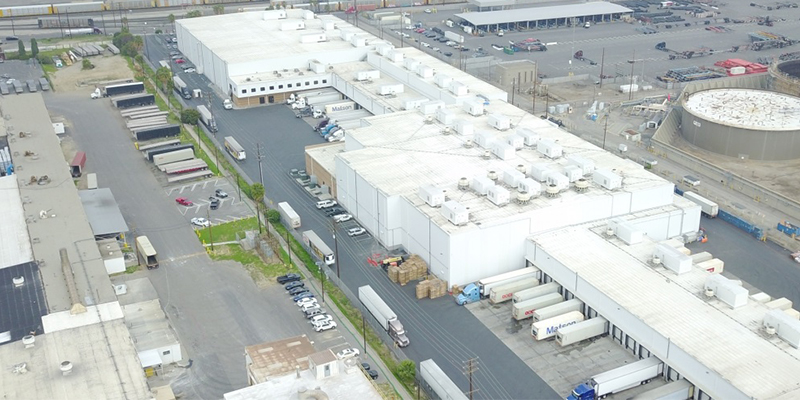California is the biggest user of cold storage in the U.S., with over 16.5 million square feet of cold storage space according to the Los Angeles Times, and the ports of Los Angeles and Long Beach have more than doubled their refrigerated container capacity in recent years to address increasing import and export demand.
Attendees at NAIOP’s I.CON West: The Industrial Conference in Long Beach, California, had the opportunity to explore local cold storage facilities on a behind-the-scenes tour as part of the conference this week.
Lineage Logistics’ 130,000-square-foot cold storage distribution center in Long Beach was developed by Gary Guesman’s team at Controlled Environments Construction, Inc. (CEC). Guesman, president of the firm, shared the history of the site, which functioned as a creosote railroad tie facility for 75 years. The brownfield required significant cleanup by the CEC team.
The facility uses a low-charge ammonia refrigeration system, an environmentally friendly natural refrigerant. A water recovery system collects defrosted water which is then filtered and reused. “We use almost no water here,” Guesman said.
Peter Yee, general manager with Lineage Logistics, the company which owns and operates the facility, estimated 25% off the company’s business is cross-docking, with 75% coming from short- or long-term storage. The facility utilizes convertible rooms, which can maintain temperatures ranging anywhere from negative five degrees to fifty degrees Fahrenheit, allowing them to adapt as needed depending on what shipments are coming in.
Konoike Pacific California’s (KPAC) E Street location, the second stop on the tour, manages cold storage operations that service the Ports of Los Angeles and Long Beach. The multi-functional facility provides a wide range of services, including transloading from trucks and railway freight cars, rapid freezing and storage in freezer and cooler warehouses with a capacity for 26,000 pallets.
Wayne Lamb, vice president and general manager, E Street Cold Logistics, said that construction on the site began May 2019, was completed in June 2020, and the facility was full by July 2021. Demand for cold storage space is so high, said Lamb, “we’re turning down clients all the time.”
KPAC has plans to expand with a new project on a roughly 17-acre property the company owns a mile and a half from the E Street facility, which Lamb estimates will cost somewhere between $30-35 million.
If current cold storage demand continues, it looks like the sky’s the limit.
Featured photo courtesy of Lineage Logistics.
This post is brought to you by JLL, the social media and conference blog sponsor of NAIOP’s I.CON West 2022. Learn more about JLL at www.us.jll.com or www.jll.ca.









